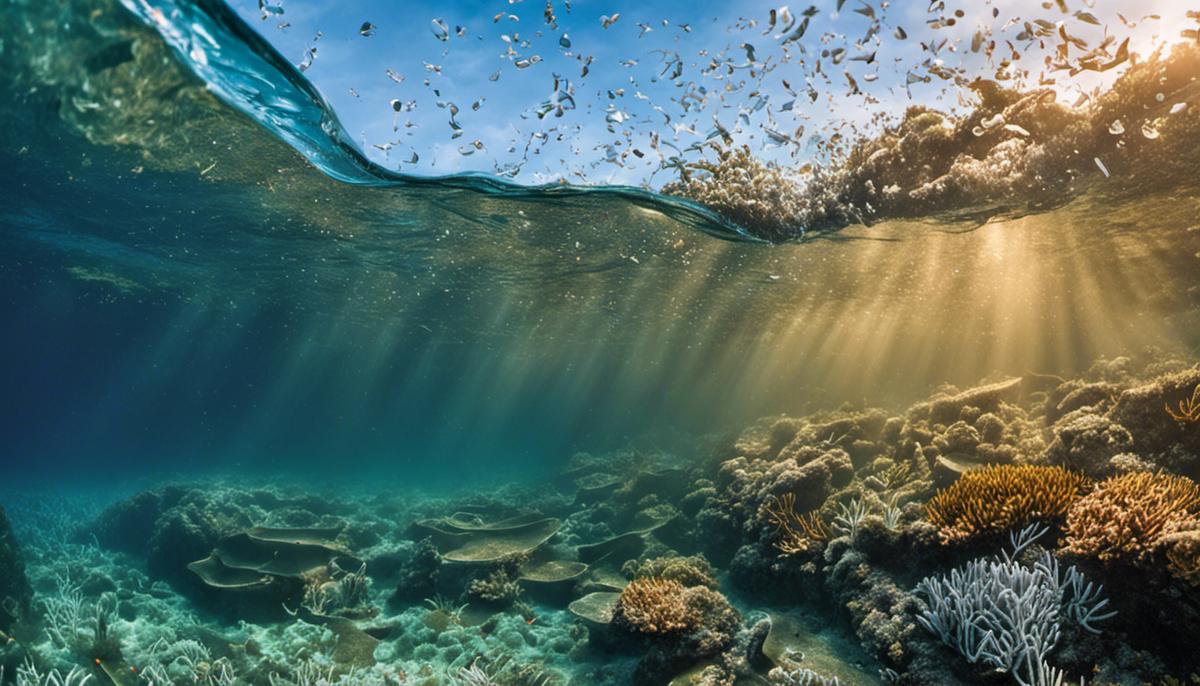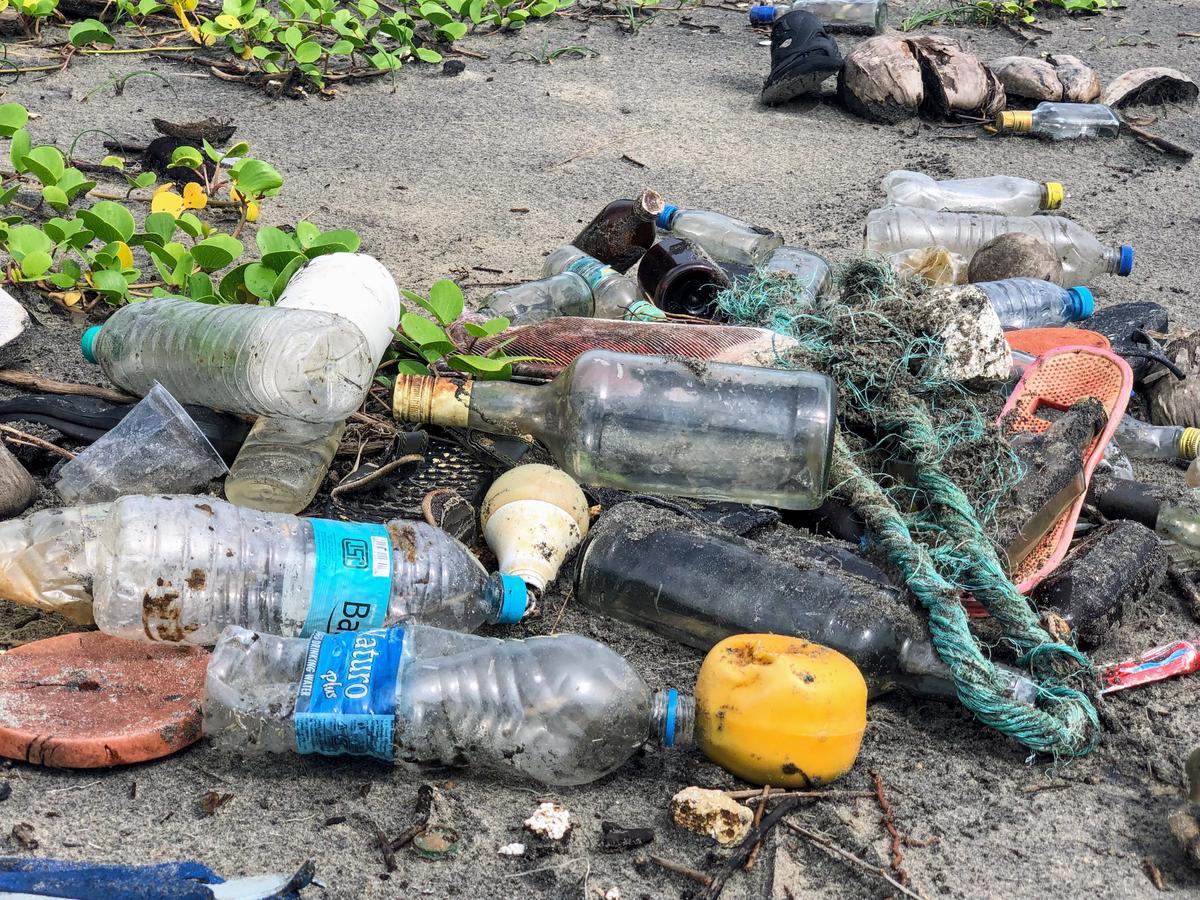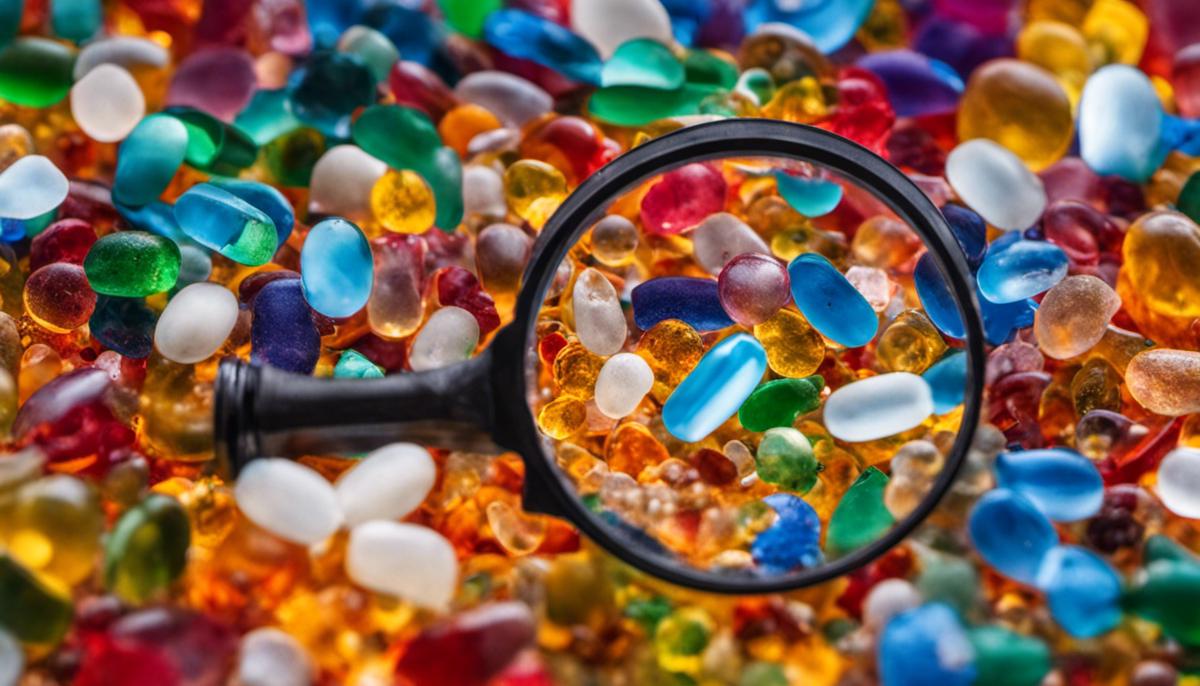Our world is ridden with the relentless issue of pollution, one form of which has been stealthily invading our waters and consequently, our lives. Microplastics, minuscule fragments of plastic less than 5mm in size, pose notable threats to water sources, forming an undetected crisis in our public water supply system. Often originating from a diverse variety of human activities, these microplastics bypass most of our filtration systems, ending up in our drinking water and potentially triggering unprecedented health risks. The journey of these tiny yet potent pollutants, from their origins to our faucets, their impact on our health and ecosystem, and the germane scientific evidence supporting such claims, forms the crux of our exploration into this mounting environmental concern.
Table of Contents
Understanding the Term ‘Microplastics’
Microplastics, as their very name indicates, are interminably small pieces of plastic, with their diameter typically restricted to under 5mm. Contrary to popular perception, microplastics are not an exclusively modern phenomenon. The omnipresence of synthetic materials since the advent of the plastic revolution in the mid-twentieth century paved the path for the production of these infinitesimal particles.
What’s alarming is that microplastics are not limited solely to water bodies; they have permeated every ecosystem on the planet. They’re present in the air we breathe, the water we drink, and the food we consume. Two primary categories of microplastics are recognized: primary microplastics (intentionally designed small, like microbeads in personal care products), and secondary microplastics (formed from degradation of larger plastic items).
The oceanic ecosystem has become a veritable repository of microplastics, which settle into the seabed or float on the surface, harming marine flora and fauna. Ingested by marine creatures, they pose a relentless threat by creating blockages, causing starvation, and acting as carriers for other pollutants.
It’s important to acknowledge that these particles not only affect the biological metabiosis of oceanic organisms but also endanger terrestrial and airborne species. Avians often mistake microplastics for food, and terrestrial creatures can unwittingly consume these particles present in soil and water.
Microplastics are also increasingly pervasive within human communities. They have been found in drinking water, beer, sea salt, and even the air in our homes. Research trails into the specifics of their implications on human health are still in nascent stages, but early signs indicate that they can interfere with hormonal function and generate inflammatory responses, posing potential health risks.
Additionally, microplastics are incredibly resilient. An example of their stubborn persistence can be witnessed in the form of the ‘Great Pacific Garbage Patch,’ a gargantuan patch of microplastics that remains undeterred by the oceanic currents.
Because of their ubiquity and persistency, removal of microplastics from the environment is a monumental challenge. Their microscopic size complicates collection and disposal methods. Moreover, methods that focus on surface collection are unable to address the sedimented microplastics in oceanic and terrestrial ecosystems.
These elusive colloidal parasites reflect our ongoing struggle with a material that our world has grown heavily reliant upon but has yet to fully understand. As we unravel the layers of this intricate problem, it becomes more evident that our current plastic production and consumption rates are unsustainable and threatening not just our ecosystems, but our very existence. The study of microplastics is, therefore, instrumental in building a scientific foundation aimed at driving societal changes in plastic use and disposal.
The imminence of the microplastic issue underscores the urgency for effective mitigation strategies and the imperative need for curating future technologies that are based on sustainable alternatives. It is an urgent fight against a potent asynchronous time bomb planted by urbanization and industrialization.

Photo by naja_bertolt_jensen on Unsplash
Microplastics and Public Water Suppy: An Overview
Transitioning from the broader ecological impact of microplastics, let’s delve further into the seemingly invisible, yet potent intrusions into public water supplies.
The process by which microplastics infiltrate these systems can be broadly linked to two main pathways: direct deposition and indirect transmission through ecological detritus.
Direct deposition primarily occurs due to the disposal of waste materials containing macro and micro-sized plastic materials into the water bodies. The breakdown of larger plastic items, like bottles and bags, leads to the creation of secondary microplastics. Urban watersheds also contribute significantly to the direct deposition of microplastics as they often gather waste from populated locales, carrying it into rivers and lakes that feed public water supplies.
Indirect transmission involves microplastics that have been discarded, found their way into natural ecosystems, and been incorporated into ecological cycles. Aquatic species, both flora and fauna, may inadvertently ingest microplastics. These plastics are then eliminated as waste or remain within the organism upon death, returning to the water system as part of the decompositional cycle. Additionally, terrestrial and airborne species deposit their waste laced with microplastics into water bodies.
Infiltration of microplastics in source water indicates a serious public-health concern, as many water treatment facilities struggle to effectively eliminate these contaminants from drinking water. The microscopic size and widespread presence of microplastics make them arduous to entirely eliminate. Once they enter the public water supply, microplastics can pose potential health risks to human populations.
Possible harms caused by microplastics primarily relate to their ability to act as vectors for harmful substances. Many microplastics are capable of absorbing and carrying toxic chemicals, including persistent organic pollutants and heavy metals. When ingested, these toxins can disassociate from the microplastics and accumulate in the body, potentially impacting human health.
Moreover, microplastics themselves might induce physical harm due to their size and shape, leading to inflammation and tissue damage. Recent studies have also suggested the potential for microplastics to interfere with various body systems, exemplified by disruptions in the endocrine system leading to hormonal imbalances.
Furthermore, the potential for pathogens to hitch a ride on microplastics should not be dismissed. While research in this area is still novel, early investigations indicate that microplastics can act as a habitat for harmful bacteria, carrying these microbial stowaways into our bodies.
In conclusion, the rampant spread of microplastics into public water supplies necessitates further multi-faceted research and refinement of removal techniques, in parallel with the development of sustainable alternatives. More awareness regarding responsible consumption and disposal of plastic products should be promoted, as this multipronged approach may aid in further mitigating the impact of microplastics on public health. Ultimately, it is mankind’s cumulative responsibility to protect the watery arteries that sustain life on this planet.

Scientific Evidence and Research on Microplastic Contamination
Continuing onward from the existing importance of this topic, one must examine the connection between public water supplies and microplastics.
An eminent scientific concern lies in this intersection, with emerging research calling attention to the frightening levels of microplastic content found in diverse water sources. It has become imperative to dissect the extent, sources, and broader implications of this contamination.
Initial studies on the planetary scale reveal a jarring reality: microplastics have successfully infiltrated public water supplies globally. These water resources, once unquestioningly used for drinking, cleaning, and irrigation, need an intensified scientific scrutiny. It has been noted that both surface and groundwater sources demonstrate significant levels of microplastic pollution. This ubiquity parades the sheer resilience of these particulates, hinting to their long-term persistence in the environment.
The sources of microplastics entering water supplies are dreadfully diverse. Behavioral practices such as synthetic clothing laundering and disposal of personal-care products have been linked to augmentation in microplastic content in treated and untreated water. Furthermore, urban runoff, extending from consumer waste to industrial releases, inevitably contribute to the pervasiveness of these entities in freshwater bodies.
The encounter of microplastics and treatment facilities presents a challenging scenario. Regrettably, existing water treatment methods display limitations in effectively removing microplastics, with variable results documented globally. Both primary and secondary treatments, while adequate for their originally intended pollutants, have proved insufficient in combating microplastics. This underlines the pressing need for enhanced research geared towards the development of more robust removal techniques.
Ingestion of microplastics is a scientific phenomenon with uncharted territories. Experimental models propose potential absorption and accumulation of microplastics and associated toxins within organisms. Although orders of magnitude vary, evidence points towards the possibility of inflammation and cellular damage. Further complexities emerge with the potential of these plastic fragments to act as vectors for bacteria and pathogens. Strikingly, studies have suggested microplastic-mediated endocrine disruption, an area requiring considerable exploration.
Concludingly, a collective course correction mandates conscious consumption and responsible disposal. Scientific research is indispensable in elucidating and addressing the microplastic contaminant saga. Society, as a whole, bears the responsibility of safeguarding water supplies from further microplastic pollution, with requisite sincerity and urgency aligned with the scope of this environmental challenge. Only by bridging scientific discovery and public action can the expansive footprints of microplastic contamination be appropriately subdued.

Steps Towards Mitigating Microplastic Pollution
Addressing the problem of microplastic pollution in public water supplies necessitates intervention at two levels: individual behavior and public policy.
At the individual level, everyone bears some responsibility in mitigating the entry of microplastics into our water systems. As end-users of plastic products, increasing our awareness and familiarity with sustainable alternatives is integral. Accordingly, we should consider adopting more sustainable habits such as rejecting single-use plastics in favor of reusable and recyclable materials, or if plastic is unavoidable, ensuring we recycle what can be recycled. By reducing our reliance on plastic-based products, we actively participate in reducing the amount of microplastic waste.
In addition, responsible disposal of plastic waste is crucial. Particularly, ensuring our waste doesn’t find its way into marine and coastal environments adds a strong line of defense against microplastic pollution. Participation in beach clean-ups and river remediation projects can act as an effective solution to direct pollution sources.
Yet, individual actions alone are not enough to comprehensively address this crisis. Policymakers and governments have a consequential role in enforcing robust policies that target the problem at its roots. Implementing stricter regulations on the production and use of plastic, particularly single-use plastic, is needed. Governments can follow the footsteps of countries like Kenya and Rwanda who have imposed bans on plastic bags.
Partnering with industry by incentivizing the production of biodegradable alternatives and implementing extended producer responsibility programs could be remarkably effective as well. Such programs hold manufacturers responsible for the impact of their products on the environment throughout the product’s entire life cycle, inherently motivating them to opt for more sustainable production methods.
For existing microplastics in our water sources, enhancing the capacity of water treatment facilities to deal with such contamination by introducing microplastic-specific filtration technologies becomes vital. Also, investing in research and development to devise better methods for detecting and eliminating microplastics in the environment might bring us closer to purification at a larger scale.
Investing in public awareness campaigns holds potential as well, highlighting the severity of the issue and educating society about the necessary behavioral changes to curb such pollution. Importantly, comprehensive education on the lifecycle of plastics should be embedded into curriculum at an early age to instill a culture of sustainable consumer behavior from the grassroots level.
In conclusion, addressing the issue of microplastic pollution in public water supplies and wider ecosystems requires a multi-faceted approach, marrying both individual action and effective, bold public policy. While the proliferation of these pollutants brings a bouquet of challenges, it equally provides an opportunity to rethink our relationship with plastics and our consumption patterns, to seek systemic solutions and adapt sustainable alternatives. The issue at hand is not merely about microplastics; it revolves around a crisis of consumption we face and its reflection on our environment. Recognition of the problem might generate the ripple of change necessary to protect our water supplies, marine life, and above all, ourselves.

Photo by john_cameron on Unsplash
The hard truths about microplastic pollution underscore the demanding quest for a workable resolution. Tackling the problem at its source would require unified efforts from individuals, industries, and governments. Responsibility rests on the shoulder of each stakeholder to be more thoughtful about our plastic usage, waste management, and to push for legislation that can effectively control the threat. Mitigating microplastic pollution is not merely a choice, but an imperative for our survival and the healthy thriving of our planet’s biodiversity. As we continue to research and gain deeper insights, we must also act diligently and timely to ensure cleaner, safer public water supplies for current and future generations. The resolution of this looming crisis lies as much in our daily choices as in our collective will to make lasting changes.

Rajan Moonbeam is a dedicated health writer with a Master of Public Health (MPH) degree. Specializing in holistic wellness and preventive care, Rajan combines scientific research with natural approaches to health, offering readers practical advice on living their healthiest life. His work is a beacon for those seeking to navigate the path to well-being with integrity and balance.

